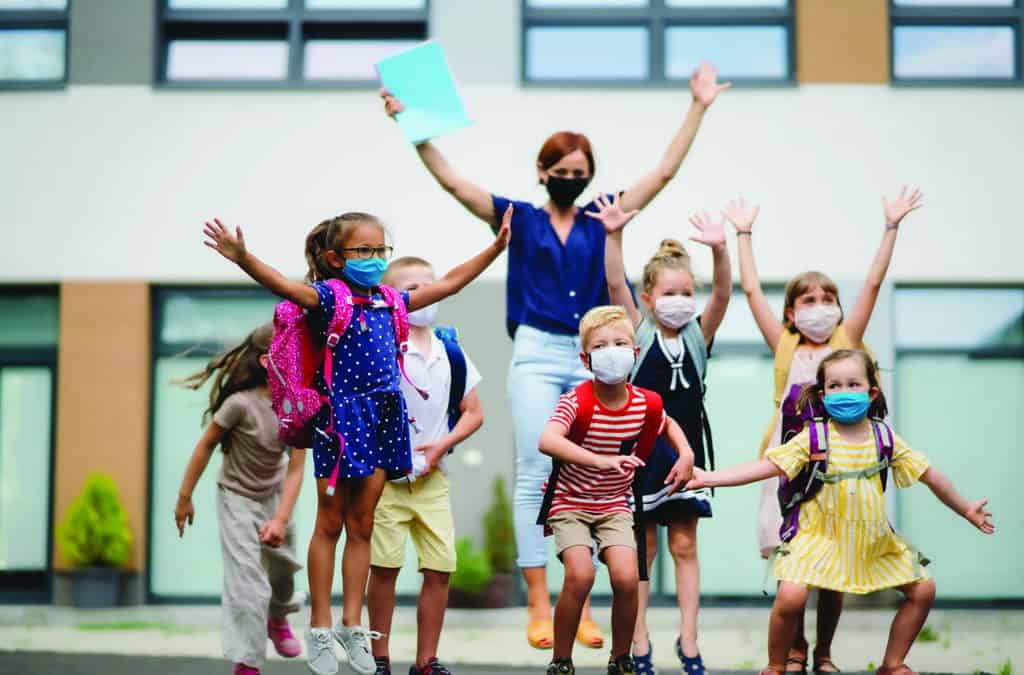
Student participation that exceeds the national average and overwhelming parent satisfaction with afterschool programs make Vermont a “Top 10 State for Afterschool,” according to a household survey commissioned by the Afterschool Alliance and released earlier this month. Nevertheless, unmet demand for programs – the percentage of Vermont parents who say they would enroll their child in an afterschool program if one were available to them – is high, especially among low-income families, who report cost as a significant barrier.
Despite being in the Top 10, for every child in an afterschool program one more is waiting to get in.
America After 3PM 2020 is based on survey responses from more than 30,000 American households, including 244 in-depth interviews in Vermont. It was completed before the coronavirus pandemic struck. It finds that 22% of Vermont students, 19,092 children and youth in all, are enrolled in afterschool programs. But 26,148 Vermont students are still without the afterschool programs their parents say they need.
Vermont is doing better than most and that’s an important accomplishment that speaks to the state’s strong commitment to children and youth,” Afterschool Alliance Executive Director Jodi Grant said. “But much more work remains. America After 3PM 2020 paints a picture of unmet need, and that is a problem we must fix. Every parent should have access to an affordable, quality afterschool program that will keep their child safe, supervised, and learning.”
The Top 10 States for Afterschool in the new study are the District of Columbia, California, Florida, Alaska, Tennessee, North Carolina, Georgia, Missouri, Vermont, and South Carolina.
Cost and access top the list of roadblocks to afterschool program participation in Vermont. A significant percentage of parents in Vermont report challenges to enrolling their child in an afterschool program, with nearly two in five parents saying that the cost of programs was an important factor in their decision not to enroll their child in a program. Low-income families are also struggling to access programs, with only 14% of children from low-income households participating in afterschool programs across the state. This is the lowest percentage in the entire nation.
“We are determined to continue the progress to make afterschool programs available to all children and youth here in Vermont,” said Holly Morehouse, executive director of Vermont Afterschool Inc. “America After 3PM 2020 finds incredibly strong support for afterschool programs among parents here in Vermont, with 85% saying they are satisfied with the program their child attends. Also encouraging is the overwhelming support for public funding of afterschool, with 86% of Vermont parents expressing their support. Students and families need afterschool programs now more than ever, since the pandemic has changed school schedules, disrupted our economy, and put many children and youth at risk. It’s essential that we address the unmet need for afterschool programs in this state now.”
To determine the state rankings, a composite score was calculated for all 50 states, plus the District of Columbia, and indexed against the national average. Each state’s overall score is based on afterschool program participation, afterschool programs reaching children in need, and parents’ satisfaction with key features of their child’s afterschool program.
In important respects, Vermont results mirror the national survey findings, which include:
Support for afterschool programs is strong. Parents give high marks to afterschool programs, with 83% agreeing programs give working parents peace of mind, 81% agreeing programs help parents keep their jobs, and 76% agreeing programs help children gain interest and skills in STEM – all increases from 2014.
Unmet demand for afterschool programs is soaring. Demand has grown 60% since 2004, from 15.3 million children (30% of non-participants) waiting to get into a program in 2004 to 18.4 million children (38%) in 2009 to 19.4 million children (41%) in 2014 to 24.6 million children (50%) in 2020.
Cost and access are barriers to participation, and inequities persist. In total, 61% of low-income parents report that cost is a barrier to enrolling their child in an afterschool program. Access (lack of transportation) is a barrier for 58%. Both are significant increases from 2014.
Just 7.8 million children are enrolled in an afterschool program today, down from a high of 10.2 million children in 2014. The inequities in terms of which students are accessing programs are stark. The number of children from low-income households participating in afterschool fell from 4.6 million in 2014 to 2.7 million in 2020, while the number of higher-income children in afterschool fell by just under 450,000 over the same period.
The number of elementary school students on their own after school rose slightly to more than 850,000, an increase of almost 38,000 since 2014, while the number of unsupervised middle and high school students dropped from 2014 to 2020.
87% of parents favor public funding for programs that provide afterschool opportunities to students in communities that have few opportunities for children and youth. Support crosses demographic and political divides, with 91% of parents who identify as Democratic, 87% of those who identify as Independent, and 85% of parents who identify as Republican in favor of public funding.
“During the pandemic, in Vermont and around the country, afterschool programs have been stepping up to meet the growing needs of students and families, even as programs face higher costs, dwindling budgets, and uncertain futures themselves,” Grant added. “Nationally, nearly half of afterschool programs that are serving students in person, and are located in school districts that are operating virtually, have waitlists. We must do better.”
The national and Vermont America After 3PM 2020 reports, and accompanying data, are available at afterschoolalliance.org.




